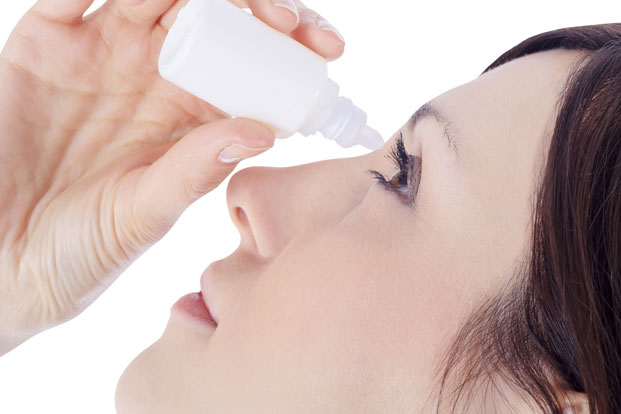Scheduling your routine trip to the eye doctor may spark feelings of annoyance (“I don’t have the time!”), irritation (“My prescription never changes; what’s the point?”) or even ambivalence (“Whoops! I forgot to schedule my appointment, maybe next week.”).
But the seemingly menial task of getting your eyes checked so you can refill your contact or glasses prescription can yield greater health benefits than many young women realize.
Eye exams reveal health problems that may go undetected for months or years. While writers may wax poetic about how the eyes are the “windows to the soul,” optometrists know that they are really windows to your entire body.
A routine eye exam can detect many diseases. This list will look at some that younger women can get and may not be aware that they are developing until a visit to the eye doctor.
Spondyloarthritis
For this family of inflammatory diseases, in particular, eye exams are deeply useful. These are rheumatic diseases (diseases that affect joints and connective tissues) that your regular eye exam can bring to light.
For example, if you suffer from inflammation of the eye and have a seemingly unconnected issue – back pain – and you decide just to ride it out, you may be enabling an inflammatory arthritis called ankylosing spondylitis (AS) to live in your body.
However, a scheduled, or even better, an unscheduled visit to your eye doctor as soon as your eye becomes inflamed, could deliver a diagnosis.
AS is a common, incurable inflammatory arthritis that hits young adults. It is important to have this condition diagnosed because the longer you unknowingly have it, the longer you will have to deal with chronic pain. Additionally, AS damages organs, specifically the heart.
Diabetic Retinopathy
For those who live with either Type 1 or Type 2 diabetes, diabetic retinopathy is a serious risk. This condition is the primary cause of blindness in America for 20- to 74-year-olds, according to the National Eye Institute. It damages the tiny blood vessels that make up the retina, the back of the interior of your eye.
Those afflicted with diabetes are also at increased risk of the following eye problems
- Cataracts: clouded lenses
- Glaucoma: pressure on the optic nerve
- Macular edema: thickening of the retina
- Retinal detachment: the retina releases from the blood vessels that supply it with oxygen
Liver Disease
Eye exams can tell if you have a sexually transmitted disease, albeit circuitously. When you go to your yearly eye exam, your eye doctor will notice if you have jaundice, a yellowing of the whites of the eyes, to start.
Jaundice often occurs in older adults who chronically abuse alcohol. As a young woman, even if you hit the bars every weekend, you likely will not suffer from it. Thus, ruling out excessive alcohol consumption, the eye doctor can recommend you have a blood test to look at your liver health.
Jaundice is the first and sometimes the only sign of liver disease. A variety of factors cause liver disease, but if you have not suffered it from birth, then it likely could be because you have Hepatitis A, B or C.
Hepatitis infects the liver and causes inflammation that prohibits the liver’s ability to do its job of cleaning toxins from your system. The ugly truth of what causes jaundice is a buildup of bilirubin in the body, bilirubin being the waste product your body creates as it excretes old red blood cells. Your body normally excretes bilirubin as bile or urine.
Thus, a perhaps unnoticeable yellow tinge to your eyes may tip your eye doctor off that your liver is not functioning well and could very well lead to a diagnosis of hepatitis. As a note, hepatitis is contracted through bodily fluid exchange or consumption of contaminated food or water.
Advanced Hypertension
During your eye exam, the doctor will examine all elements of your eyes: the lens, cornea, retina and more. An optometrist will use tools to see the blood vessels in the back of your eyes, where he or she monitors these blood vessels year to year. An experienced eye doctor will alert you if the blood vessels seem too skinny or have restricted blood flow.
When already thin blood vessels constrict or she or he notices new blood vessels responding to a lack of oxygen, this may indicate retinal bleeding. Eventually, this can cause retinal detachment and subsequent blindness. Advanced hypertension creates this condition.
Again, hypertension is another one of those diseases that it seems like you won’t have to deal with for years (or hopefully, never). However, a 2011 study discussed by Steven Hirschfeld, Associate Director for Clinical Research for the NIH’s Eunice Kennedy Shriver National Institute of Child Health and Human Development (NICHD) notes that young adults aged 24 to 35 are showing increased instances of high blood pressure (hypertension).
The name is especially apt because hypertension refers to the situation where one’s blood’s pressure on the walls of the arteries and veins is higher than normal (hyper). It is important to have hypertension addressed by a doctor — a general practitioner — not an eye doctor because the condition can cause stroke or kidney disease, among other complications.
In sum, these are just a few of the problems that an eye exam can address. Especially for those who do not regularly see a general practitioner, an eye exam can keep you abreast of any internal changes that may have gone unnoticed while you live your daily life.
Indeed, with so many young adults leading increasingly busy lives and often without health insurance, the money you spend getting an eye exam should be seen not only as taking care of one more menial task but instead as an investment in your healthy future. Because face it, if you don’t keep tabs on your health, your body will let you know. And that’s something that is easier marked on your schedule than a surprise visit.

Leave a Reply